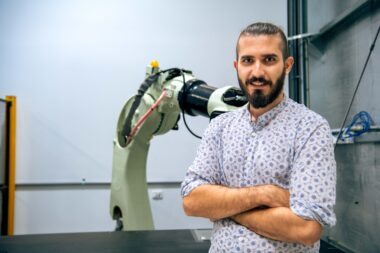
A Monash expert says toxic levels of PFAS chemicals persisted in nearby recreational waters for two-weeks after the Footscray-Tottenham factory fire in 2018.
Chemical engineer Dr Sally El Meragawi is available to discuss the implications of the Derrimut factory fire, the use of PFAS-containing firefighting foams, and the development of filtering technologies capable of removing these ‘forever’ environmental contaminants from drinking water.
Dr Sally El Meragawi, Mechanical & Aerospace Engineering
Contact details: +61 408 508 454 or sally.elmeragawi@monash.edu
The following can be attributed to Dr El Meragawi:
“Contamination from fires at chemical storage sites can include a diverse range of substances, such as per- and polyfluoroalkyl substances (PFAS), heavy metals and more. These chemicals can have serious long-term impacts on health and the environment.
“After the Footscray-Tottenham chemical factory fire in Melbourne in August 2018, levels of PFAS chemicals (PFOS and PFOA) were found to be 16 times higher than the safe recreational water quality levels downstream from the fire site for two weeks following the incident. EPA Victoria reported that contaminants like hydrocarbons, solvents (such as acetone), herbicides, and heavy metals were also detected.
“Firefighting foams are also a common source of PFAS. Despite efforts to regulate their use, these foams have not yet been phased out. Over the years, there have been numerous high-profile cases of PFAS contamination, particularly near military bases, airports, and firefighting training sites. Recently, there has been a push for stricter regulations, more research into alternative firefighting foams, and cleanup efforts at contaminated sites.
“PFAS are often called "forever chemicals" because they persist in the environment and the human body for a long time, over 35 years. They have been linked to health issues such as various cancers and thyroid diseases. Once in the environment, PFAS do not break down and can accumulate in the food chain.
“Traditional water treatment plants struggle to remove some of these smaller PFAS effectively. This is why our research team at Monash University is developing a new type of membrane designed to specifically filter out these persistent environmental contaminants from drinking water.”
For more Monash media stories visit our news and events site: monash.edu/news
For any other topics on which you may be seeking expert comment, contact the Monash University Media Unit on +61 3 9903 4840 or media@monash.edu


